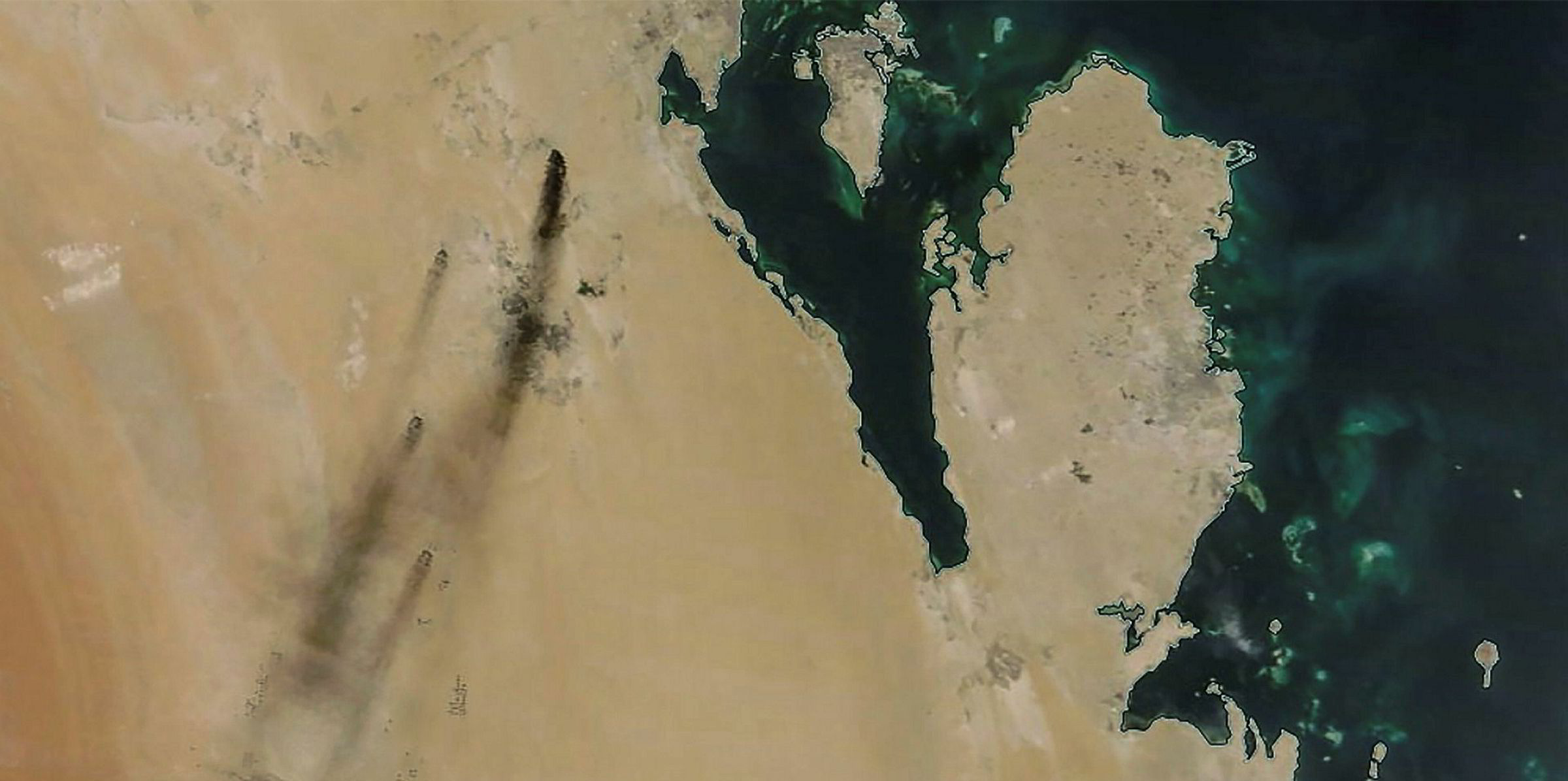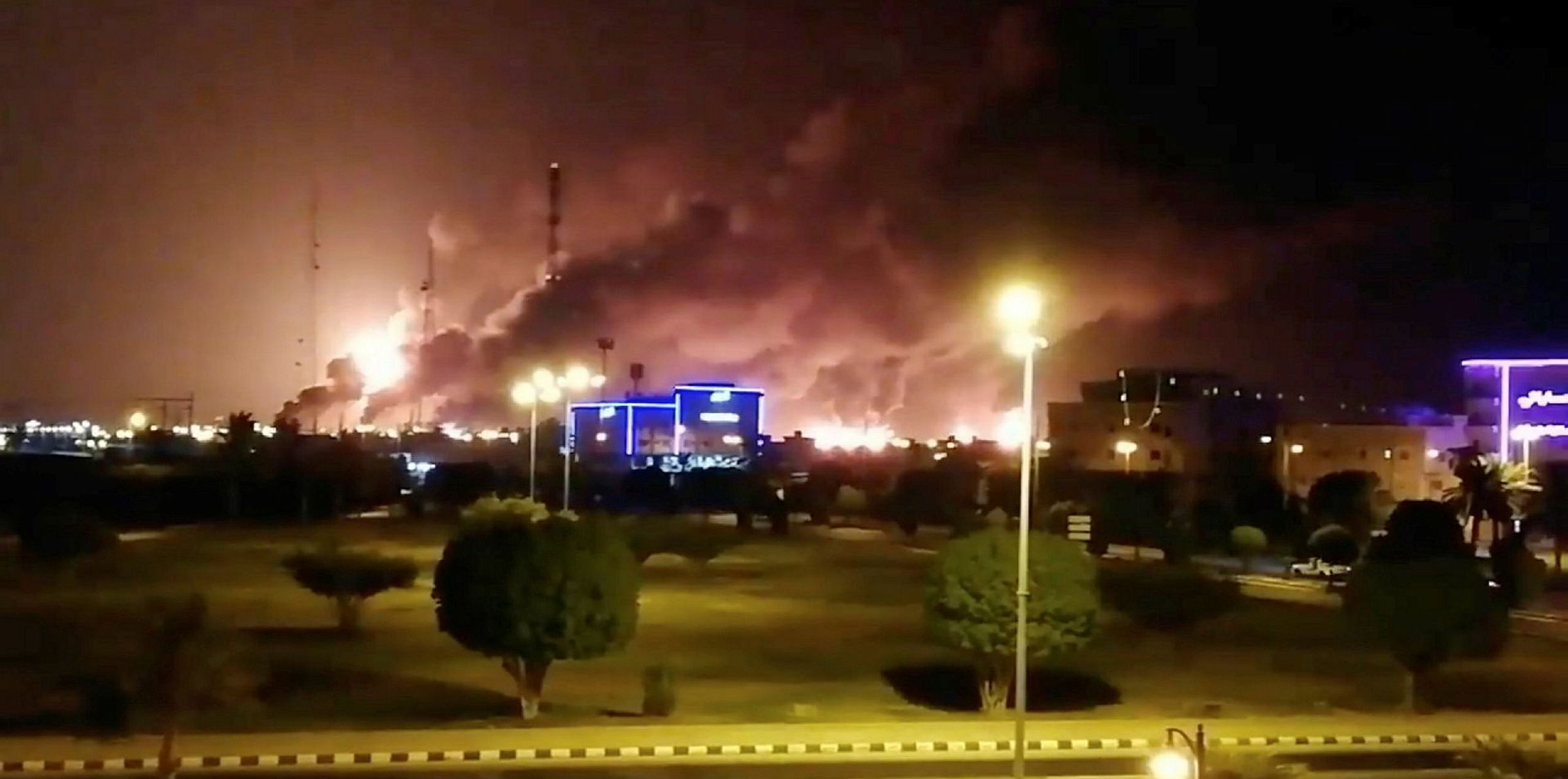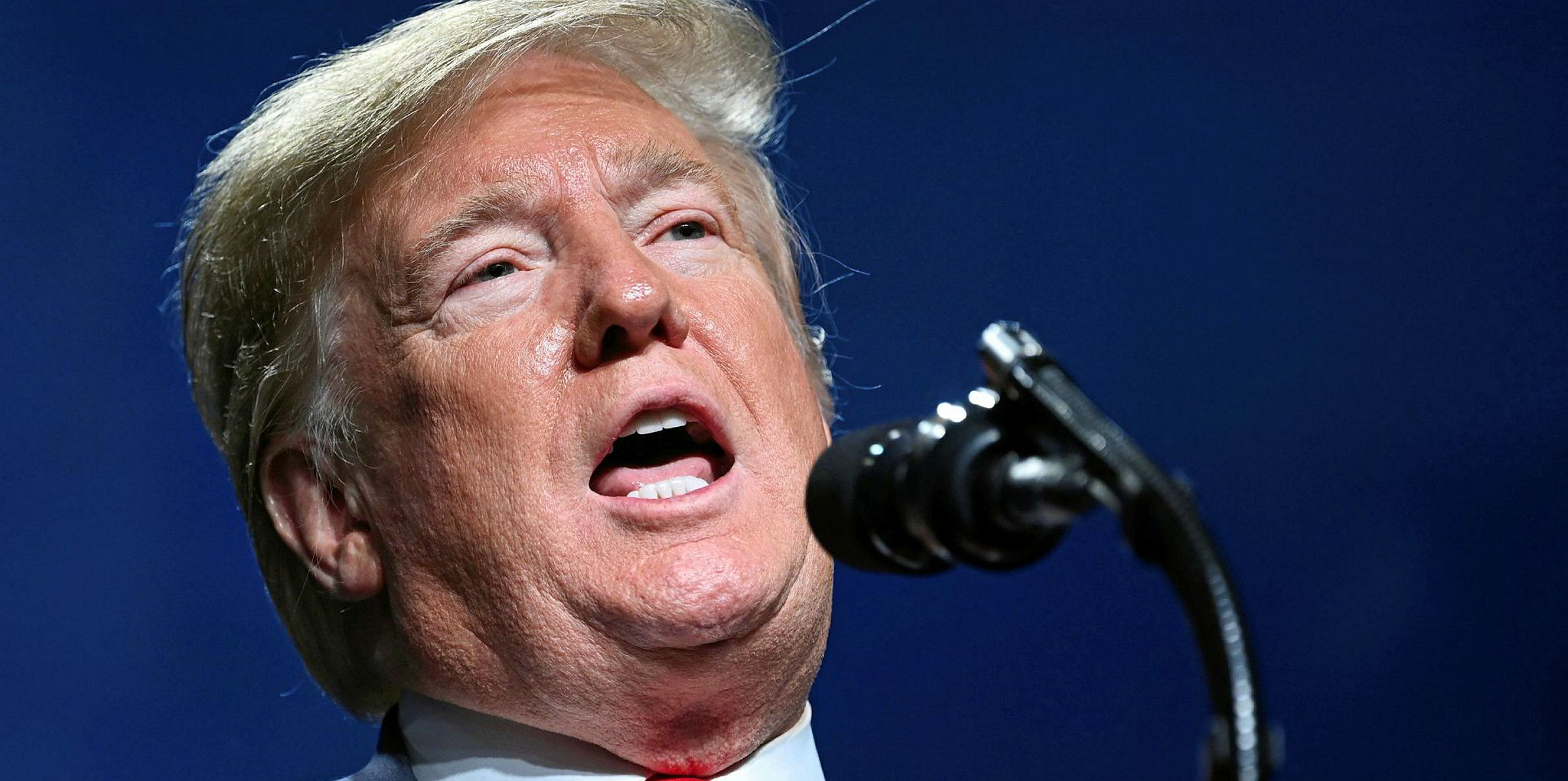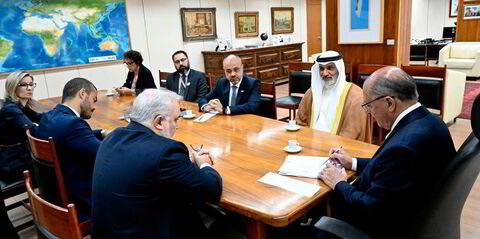Crude tanker loading has stopped at Ras Tanura following multiple drone attacks on Saudi oil facilities last Saturday as market participants continue to digest how the supply disruption would affect oil shipping markets.
According to cargo intelligence provider Kpler, no crude has been lifted from Ras Tanura —the world’s largest oil export terminal—since last Saturday.
As of Monday morning, eight VLCCs were waiting outside of the terminal. They are the Al Jabriyah II (built 2007), C Prosperity (built 2009), Niban (built 2010), Long Hu San (built 2013), New Dream (built 2014), VL Prosperity (built 2015), Kirishima (built 2017) and Qamran (built 2018).
Three VLCCs — the Ithaki (built 2011), Papalemos (built 2018) and Maran Arete (built 2016) — were berthing at Ras Tanura. DHT Falcon (built 2006), also a VLCC, was waiting close to the berths.
Another five VLCCs, namely the Tinat (built 2002), Sahba (built 2009), Olympic Lion (built 2010), VL Prime (built 2015) and Caribbean Glory (built 2017), were berthing at the nearby Juaymah single mooring points.
An email seeking comment from Saudi Aramco, the national oil company of Saudi Arabic that control the kingdom’s petroleum exports, has yet to be responded to at the time of writing.
“Vessels are not able to load. …There will be further delays for loading, and that could have some influence on the market,” said an Asia-based broker.
While vessel delays tend to be positive for short-term freight rates, some analysts have reckoned a prolonged disruption in Saudi Arabia can have a mixed impact, pending on how consuming nations fill the supply gap.
In physical trade, tanker market players have apparently entered a holding mode, with the Saudi oil supply situation still unclear.
“There are many uncertainties and we are not too sure what will happen,” said a major charterer.
The forward freight agreement market has also not seen much movement since the attacks.
Tanker stocks have seen mixed reaction so far. In Hong Kong, share price of Cosco Shipping Energy Transportation closed down 1.38% at HKD 4.30 on Monday. In European markets, Frontline shares rose 1.5% to NOK 84.80 while Euronav also increased by 1.32% to €8.09 during morning trading, though.
Supply disruption
Yemen's Iran-backed Houthi rebels have claimed responsibility for the attack on Saudi Aramco’s 7m-barrel-per-day (bpd) oil plant in Abqaia, which typically processes sour crude into sweet alternatives and supplies Ras Tanura.
Saudi Arabia’s second largest oilfield in Khurais, which has a production capacity of 1.5m bpd, was also attacked and faced supply disruption.
The kingdom has been forced to take 5.7m-bpd oil production offline, roughly equivalent to 7% of the world’s total crude and condensate output, and some reports suggest it could be weeks before the operations resume normal.
“The drone attack on Saudi Aramco's facilities in Abquaiq and Khurais during the weekend is likely to have an effect on shipping. However, the extent remains unknown for now as the actual long-term effects and duration remains unknown,” Danske Bank analyst Anders Redigh Karlsen said.
Tanker demand could be hit if consuming nations opt to tap into commercial stocks and emergency reserves, but some analysts expected tonne-mileage to increase when farther suppliers—such as the US—hike their exports to meet Asian demand.
"While initially this is likely to force importing countries to draw from their inventories, and hence result in a negative impact on crude tanker demand and freight rates, we believe that over the medium and longer term the impact...is likely to be very positive for freight rates due to the distance-multiplier to transport demand,” Kepler Cheuvreux analyst Vetle Holt Johansen said.
Big Asian demand
Consultancy Wood Mackenzie's research director Vima Jayabalan said China, South Korea, Japan and India are the biggest takers in Asia for the crude supplies that have been hit.
China and Japan lead the pack at an average of 900 to 1,100 kilo barrels per day each.
"India could be most exposed as its reserves are the least. China has SPR (Strategic Petroleum Reserve) and commercial crude storage, while Korea and Japan have IEA reserves to fall back on," Jayabalan said.
"Collectively, Asian demand for Saudi Arabian crude is around 5 million barrels per day; accounting for almost 72% of Saudi Arabia's crude exports. Asian consumption of Arab Extra Light and Arab Light grades alone from the affected facilities varies between 2.5 and 2.7 million barrels per day seasonally. The region's dependence has increased significantly over the last 1.5 years."
The analyst added: "A prolonged outage and/or further upside above-ground risks in the near term could have an impact on the preparation ahead of the IMO marine bunker specifications change, but at the moment it is still early days to assess."






